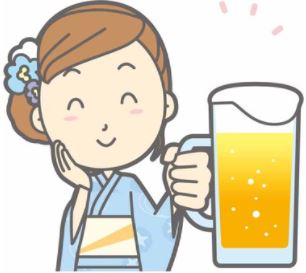Customer Service Japan Style: How to Become a Good Sales Person in Japan
CONTENTS
The Japanese Greengrocer
You have all seen him. Whether you live in Japan, or you go to Japan on business and happen to wander down to the basement of a department store, you have all met the greengrocer. He greets customers with a hearty “Irasshai!” (welcome) and shouts out his wares—all day long. He usually (maybe not nowadays) wears a traditional happi coat and a hachimaki headband, looking like a character in a samurai movie. If you buy something, he thanks you loudly. He calculates your change in his head and gives it to you with a bow. If you are a regular customer he may even include a small item for free, perhaps some of those grapes you admired but did not buy.
When selling to the Japanese, you want to be more like the greengrocer and less like the supermarket cashier. Here are some characteristics of successful customer service.
Be Highly Competent and Knowledgeable About Your Products

When you sell your products to your Japanese customers, you must make sure everything the customer sees is well presented and without mistakes. Be sure to have important data at your fingertips. Do not be calling a lifeline to ask about eggplants. Try to anticipate questions from your customer and be prepared with answers.
Greetings and Courtesy
In Japan, the customer is not merely a king. The customer is a “kamisama”—a god! Be sure to greet your customers properly and express appreciation for their business, each and every time you see them. When they visit your premises, your top executive should make an effort to greet them when they arrive and say goodbye when they leave, even if he or she does not participate at their meetings. Hierarchy is very important to the Japanese. Within the context of the customer-supplier relationship, any employee from the customer’s company ranks higher than top management of the supplier, and should be treated with appropriate courtesy. Nowadays, there is much talk about “partnering” with suppliers, but there is no getting around the fact that the customer is the “kamisama.”
Wear the Uniform
Just as the greengrocer wears the happi coat to show that he is a greengrocer, your employees should be appropriately dressed when interacting with Japanese customers. In Japan you may have noticed that the greengrocer, shop clerk and railway conductors all stay in their roles while in uniform. The greengrocer is always loud. The conductor is unfailingly polite.
When you interact with Japanese customers, you represent the company and there are no stupid questions.
Anticipate Needs
Japanese suppliers create extra value and support customer relationships by keeping an eye out for ways they can help, even without specifically being asked. Think about providing a heads up to new trends in your industry, for example.
“Sabisu”
“Sabisu” is when the greengrocer gives you grapes you did not pay for. The word comes from the English word “service.” It is given from the supplier to the customer, so it is the opposite of tipping. Once in a while, you may want to show your appreciation to your customer by providing an extra product, service or discount that is not specifically requested. Also, it is typical for long-term customers to request a discount once regular business is established.
“Aftercare” (after sales service)
Your long-term relationship with your Japanese customer begins with the sale. Do not forget to show appreciation to your customers after the contract is signed. It is important to follow up to ensure that they are satisfied with the product they received. Calls, emails, or visits are welcomed. Also, these follow-up conversations are also a good way to spot opportunities for add-on sales!

“Settai” (relation-ship building and hospitality)
Communication during office hours can be formal and not very frank. Face to face communication over drinks can break the ice and get you information you can use. Whenever possible, try to create opportunities for meeting in person. This is better than simply relying on telephone, faxes and email. Always plan social occasions when your customer visits your site. When possible, arrange to host them when visiting their site as well. This time is important for building relationships. Some good activities are meals (with drinks), golf and sightseeing.
“Madoguchi” (assigned contact person)

Japanese customers appreciate having an assigned contact person who is accessible and responsive. This person should be assigned for the long term and should become a specialist in this customer—know their history, preferences and concerns. The contact person should work well with the customer’s representatives, keeping in mind their circumstances and challenges. In Japan, madoguchi may even visit their customer every single day!
Japanese customers expect all their phone calls, emails and faxes to be acknowledged as soon as possible. It is best to reply that same day. Even if customers’ requests cannot be carried out right away, at least let them know that you received the inquiry and when you plan to get back to them. Depending on the request, regular status reports may be appreciated.
Positive Interaction
Don’t automatically say “no” to unusual or complicated requests. Don’t be sarcastic—“You want it when??” But make sure to check the deadline. Japanese customers expect that your response will be a positive one, indicating a willingness to try. You will probably never be a “partner” with your “kamisama,” but attentiveness, cooperation, and oh yes, a gift of grapes now and then, can put you ahead of the competition in customer service.


